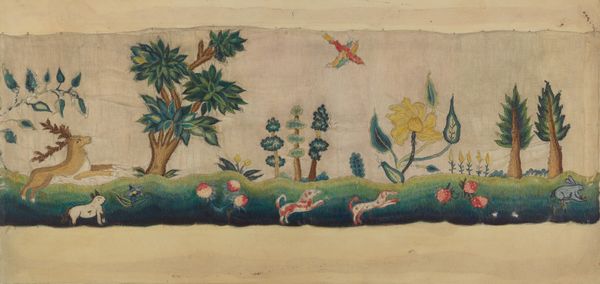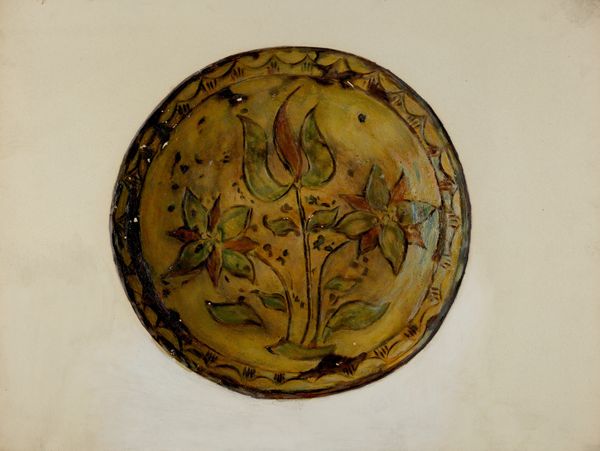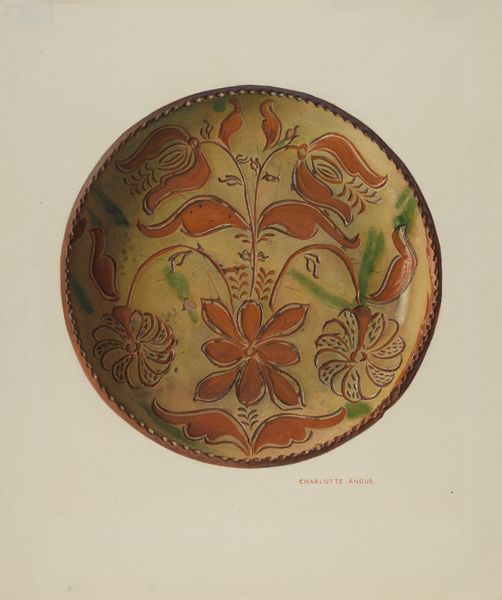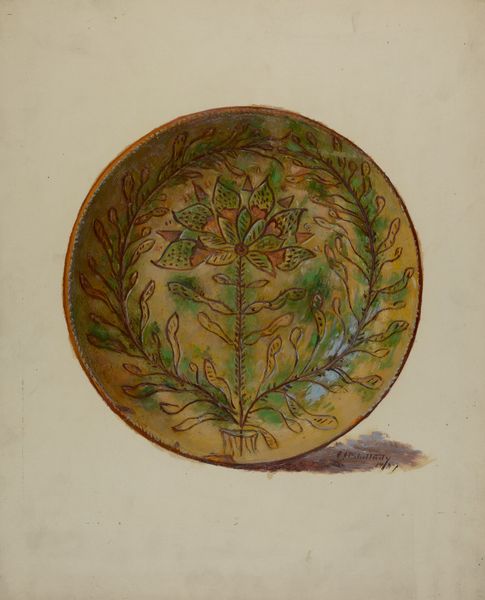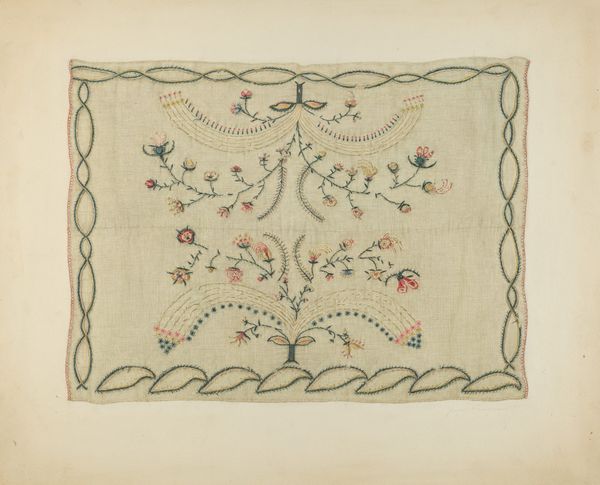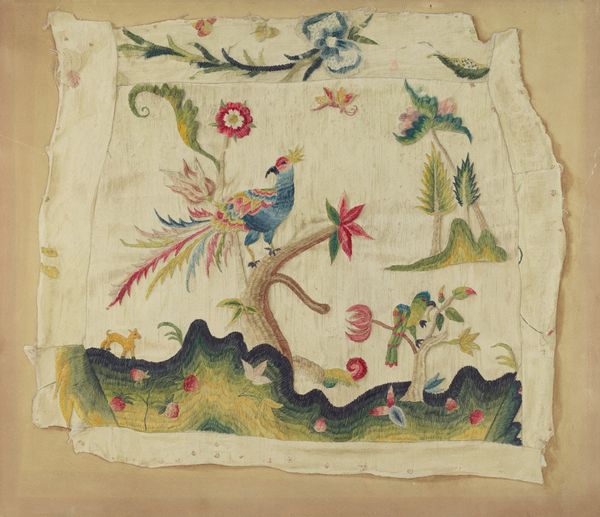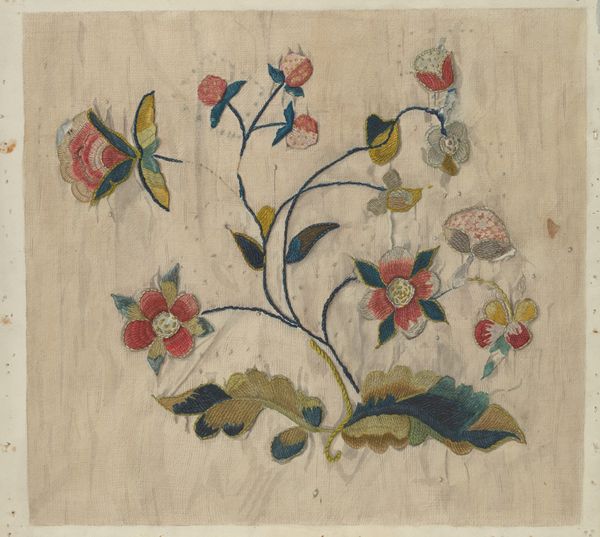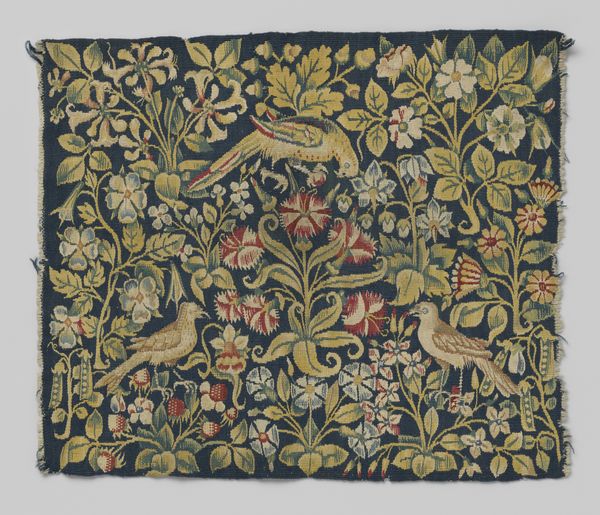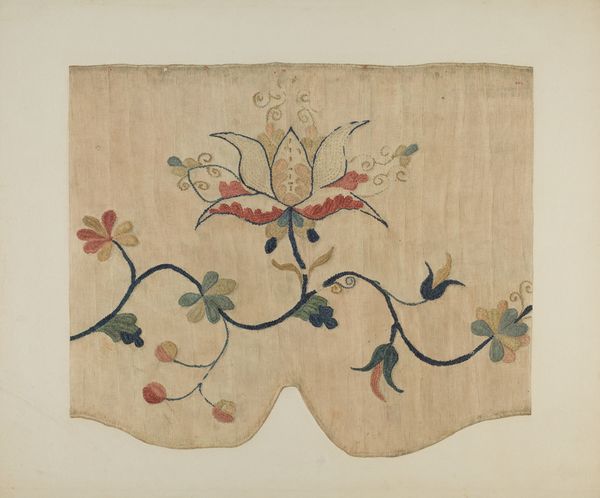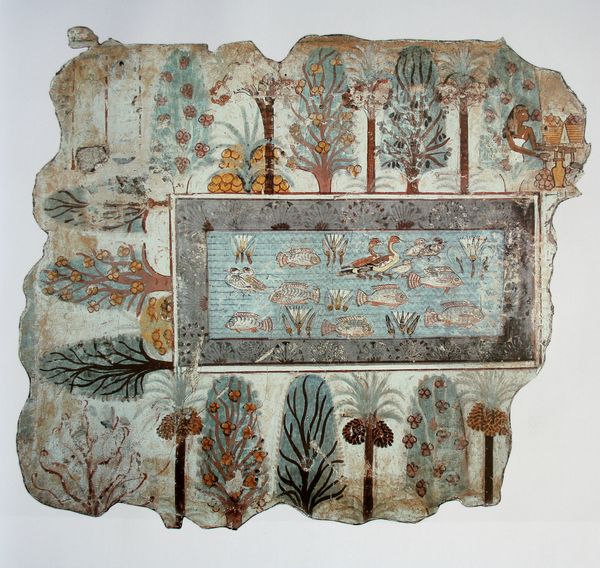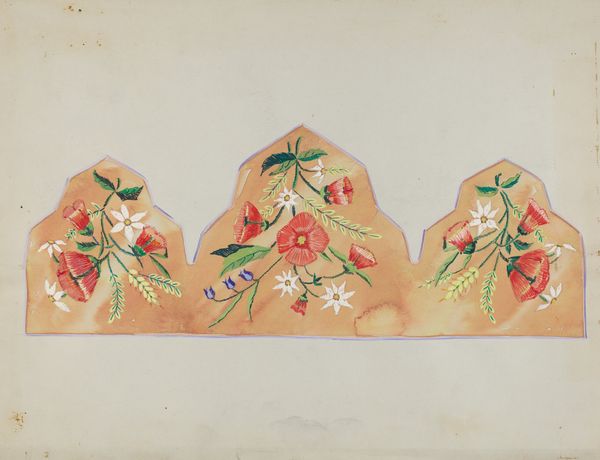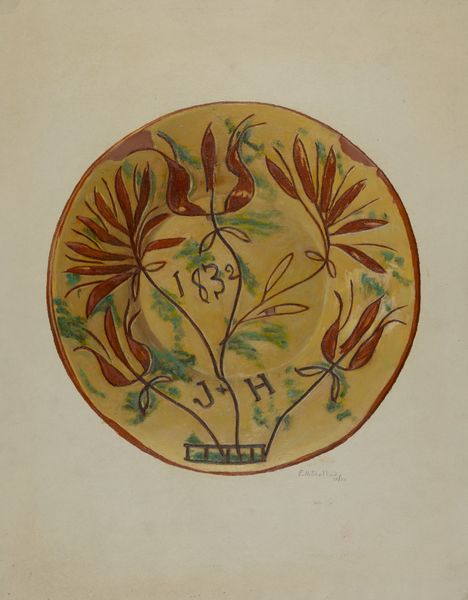
drawing, fibre-art, textile
#
drawing
#
fibre-art
#
water colours
#
landscape
#
textile
#
coloured pencil
#
folk-art
#
decorative-art
#
decorative art
#
watercolor
Dimensions: overall: 35.6 x 27.1 cm (14 x 10 11/16 in.)
Copyright: National Gallery of Art: CC0 1.0
Editor: So, here we have "Chair Seat" from 1935-1942 by Elizabeth Moutal. It appears to be mixed media, including drawing and fibre art on textile with watercolour and colored pencil. There's a decorative, folk-art quality to it. What’s striking to me is how the piece elevates a commonplace object like a chair seat into a decorative piece that depicts a playful scene of wildlife. How do you interpret this work? Curator: Well, immediately I’m drawn to the tension between function and artistry here. Moutal's choice to embellish a utilitarian object raises some questions. Consider the labor involved: the time spent on this delicate embroidery and drawing contrasts sharply with the expected wear and tear of a chair seat. Does that devalue the labor or elevate it to a domestic form of "high" art? Editor: That's interesting! It makes me think about the value we place on craft versus fine art and the domestic labour that's traditionally been considered "women's work." Curator: Precisely! Moutal uses her medium – textile and fiber art – to represent familiar motifs such as wildlife and foliage within the constructed landscape. It begs the question, whose work are we sitting on? How does the imagery relate to ideas around land ownership and leisure in the context of the 1930s and 40s? Editor: I see what you mean. Thinking about the material context definitely adds another layer of understanding. Curator: Right, and perhaps, this chair seat isn't meant to be sat upon at all but meant for display. Editor: That shifts the whole perspective! This conversation really highlighted how much the social context influences the artistic interpretation of everyday objects. Curator: Exactly. By considering the labor and materials, we uncover deeper meaning and push the boundaries of art history beyond the purely aesthetic.
Comments
No comments
Be the first to comment and join the conversation on the ultimate creative platform.
